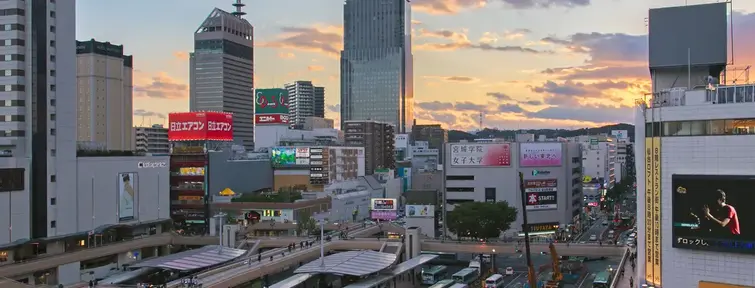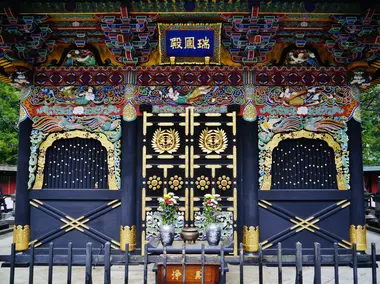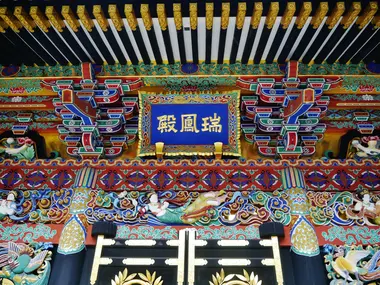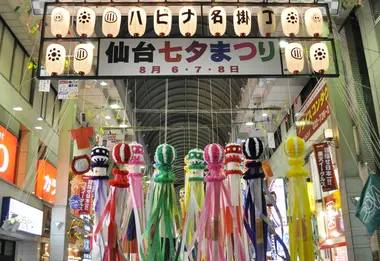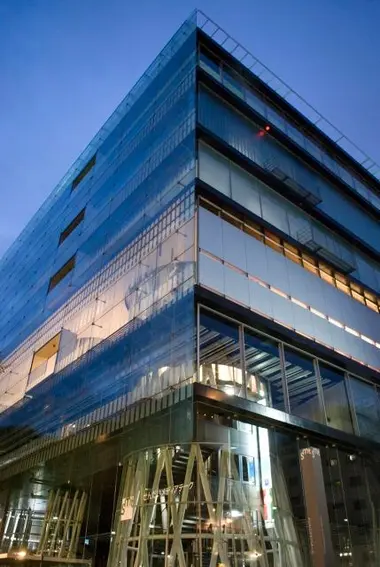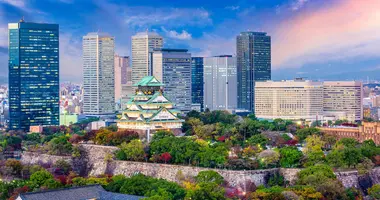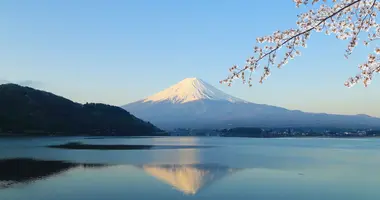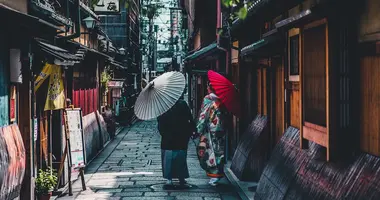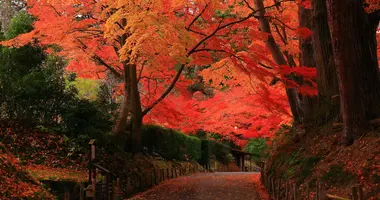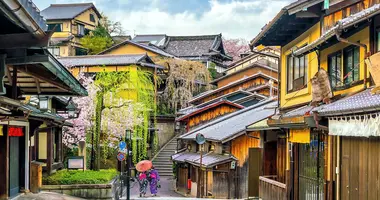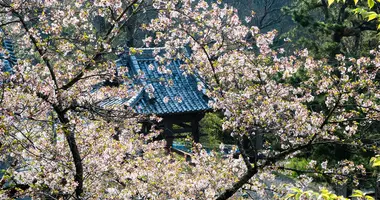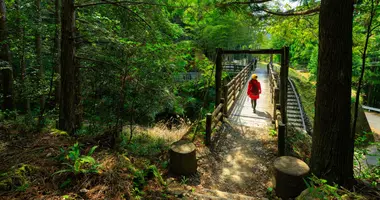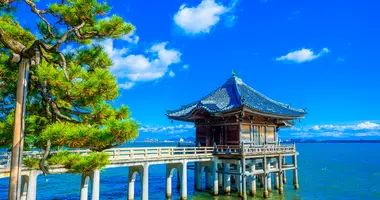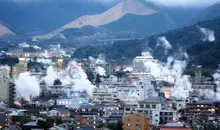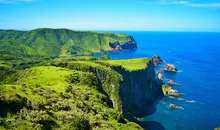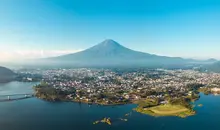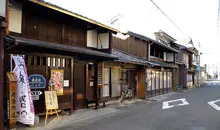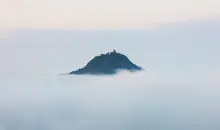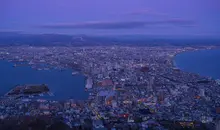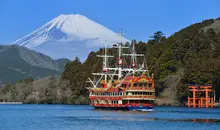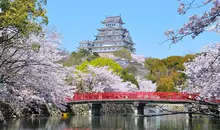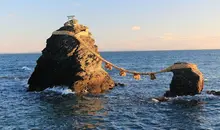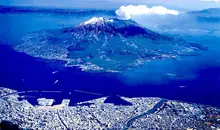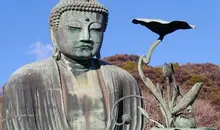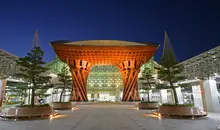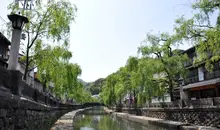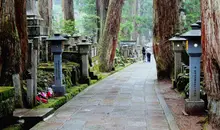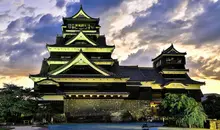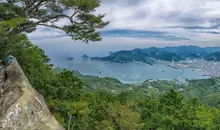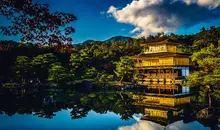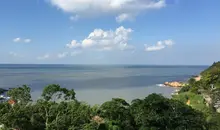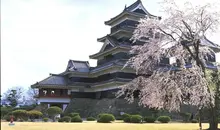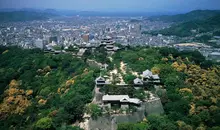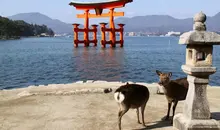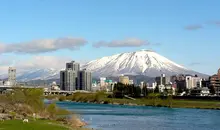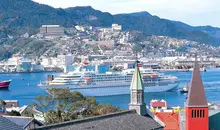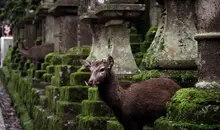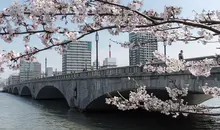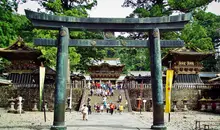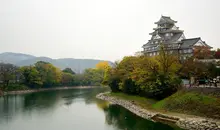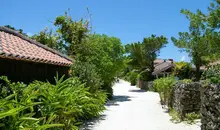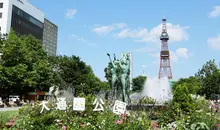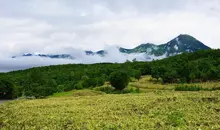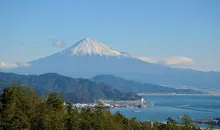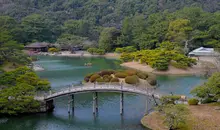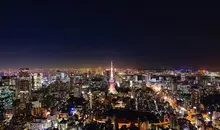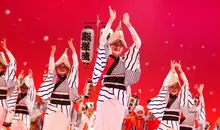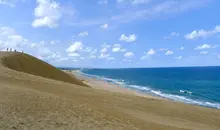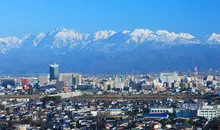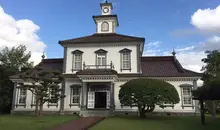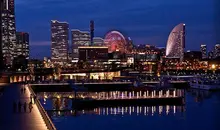Sendai
- Veröffentlicht am : 10/09/2025
- Von : Charley/Phoebe
- Youtube
Local Time 12:26
Symbol : sunny_cloudy
Temp : -4.3°C
Date : Donnerstag
Symbol : sunny_cloudy
Temp : -1.2°C
Date : Heute
Symbol : sunny_cloudy
Temp : 1.9°C
Date : Morgen
Symbol : sunny_cloudy
Temp : 7.8°C
Date : Sonntag
Local Time 12:26
Symbol : sunny_cloudy
Temp : -4.3°C
Date : Donnerstag
Symbol : sunny_cloudy
Temp : -1.2°C
Date : Heute
Symbol : sunny_cloudy
Temp : 1.9°C
Date : Morgen
Symbol : sunny_cloudy
Temp : 7.8°C
Date : Sonntag
Die Hauptstadt von Tôhoku und eine sehenswerte Stadt im Norden Japans
Sendai liegt im Nordosten Japans und ist die Hauptstadt der Präfektur Miyagi und die größte Stadt der Region Tohoku. Die auch als "Stadt der Bäume" bezeichnete Metropole mit über einer Million Einwohnern bietet ein perfektes Gleichgewicht zwischen moderner Urbanität und einem reichen historischen Erbe. Sendai wurde im Jahr 1600 von dem mächtigen Feudalherrn Date Masamune gegründet, der auch als "einäugiger Drache" bekannt war, und besticht durch seine bemerkenswerte Architektur, seine einzigartige Gastronomie und seine üppigen Grünflächen. Ob Sie sich für die Geschichte der Samurai oder die lokale Küche interessieren oder einfach einen idealen Ausgangspunkt für die Erkundung der Region Tohoku suchen, Sendai wird Sie mit seiner Vielfalt und Authentizität bezaubern.
Sendai - Eine mittelalterliche Geschichte verbunden mit dem Fürsten Masamune Date
Sein Helm mit der Mondsichel, seine schwarze Rüstung, sein Schloss: In Sendai kennt jeder Masamune Date (1567-1636), den großen Fürsten, der aus der kleinen Hafenstadt seit ihrer Gründung im Jahr 1601 eine blühende Stadt machte. Als ausgezeichneter Militärstratege erbte er schon in jungen Jahren das Oberhaupt der Familie und dehnte sein Herrschaftsgebiet schnell auf die Region Tôhoku aus. Masamune war außerdem ein großer Liebhaber des Noh-Theaters und der Kalligraphie. Die Geschichte und den Einfluss des "Einäugigen Drachen" (Spitzname für Masamune, der in seiner Kindheit ein Auge verlor) kann man westlich von Sendai auf dem Kyogamine-Hügel entdecken.
Die alte Burg, Aoba-jô, birgt hinter ihrem mächtigen Wachturm wunderschöne Stücke aus der damaligen Zeit und bietet neben den historischen Ruinen auch einen spektakulären Ausblick. Nicht weit entfernt befindet sich der Gokoku-Schrein, der dem Yasukuni-jinja in Tokio angegliedert ist und ein kleines Museum beherbergt, das der Militärgeschichte des modernen Japans gewidmet ist.
Was kann man in Sendai sehen und unternehmen?
In Sendai herrscht während der heißen und feuchten Sommer Japans ein kühleres Klima als im Rest des Landes, was die Stadt zu einem idealen Ort zum Übernachten und für Abenteuer im Norden des Landes macht.
In Sendai herrscht während der für Japan als heiß und feucht bekannten Sommer ein kühleres Klima, was die Stadt zu einem hervorragenden Ausgangspunkt für Abenteuerreisen in den Norden des Landes macht.
Zu den Sehenswürdigkeiten und Aktivitäten in und um Sendai gehören das Stadtmuseum Sendai, das prächtige Mausoleum von Masamune Zuihoden, die Ruinen der Burg Sendai (Aoba-jô), die von Skulpturen gesäumte Straße Jozenji-dori und die Matsushima-Bucht an der Küste, die mit malerischen kleinen Inseln übersät ist. In den nahegelegenen Bergen besticht der Zao Onsen mit seinen heißen Quellen und spektakulären Ausblicken. Die Burg Shiroishi liegt etwa 50 Minuten mit dem Zug in Richtung Süden entfernt.
Das Miyagi-Stadion in Rifu war einer der Austragungsorte der Fußballweltmeisterschaft 2002. Es war auch Austragungsort von Fußballspielen (Soccer) während der Olympischen Spiele 2020.
Sehenswürdigkeiten in Sendai
Der Zuihoden ist das Mausoleum des mächtigen Daimyo Masamune Date (ausgesprochen Dah-teh). Es erinnert in seiner aufwendigen Schönheit an das Tokugawa-Mausoleum in Nikko.
Die ursprünglichen, reich verzierten Gebäude aus dem 17. Jahrhundert wurden im Zweiten Weltkrieg zerstört, aber 1979 vollständig restauriert.
Die Anlage liegt am oberen Ende einer steilen Steintreppe inmitten eines Waldes und umfasst auch die Mausoleen von Tadamune Date und Tsunamune Date, dem zweiten und dritten Nachfolger des Patriarchen des Date-Klans.
Die Burg Sendai, auch Aoba-jô genannt, stammt aus dem Jahr 1602, von der heute jedoch nur noch die beeindruckenden Steinmauern und der Wachturm erhalten sind. Die Schlossgärten bieten einen schönen Blick auf die Stadt sowie auf eine ikonische Statue von Masamune auf einem Pferd. Die Aoba Castle Exhibition Hall bietet digitale Rekonstruktionen der Burg in ihrer Blütezeit.
Der Sendai Toshogu-Schrein in der Nähe des Toshogu-Bahnhofs der JR Senzan-Linie wurde von Tadamune Date zu Ehren von Ieyasu Tokugawa, dem Gründer des Tokugawa-Shogunats, und seinem berühmten Verbündeten errichtet.
Der Rinno-ji-Tempel verfügt über eine dreistöckige Pagode und einen Wandelgarten, die zu den Höhepunkten des Besuchs gehören. Der Tempel wurde in den 1440er Jahren gegründet und Anfang des 17. Jahrhunderts an seinen heutigen Standort verlegt. Dieser Schrein ist der Schrein der Familie Date.
Der Osaki Hachimangu-Schrein, der 1607 von Masamune Date gegründet wurde, ist als Nationalschatz eingestuft. Die Haupthalle ist mit schwarzem Lack und Blattgold verziert. Hachiman gilt als Gottheit des Krieges.
Der Komyo-ji-Tempel in der Nähe des Bahnhofs Kita-Sendai der Senzan-Linie beherbergt das Grab von Tsunenaga Hasekura (1571-1622), der Botschafter von Masamune Date in Mexiko und Spanien war. Im Jahr 1613 segelte Hasekura mit der Date Maru über Luzon auf den Philippinen nach Acapulco und besuchte anschließend Spanien, die Schweiz und Rom. Sein Schiff war mit 150 bis 180 Männern eines der ersten japanischen Schiffe, die den Pazifik überquerten. Als getaufter Christ kehrte Hasekura 1620 nach Japan zurück, obwohl das Christentum zu dieser Zeit vom Tokugawa-Regime geächtet wurde. Sein Sohn, der Oberpriester von Komyo-ji, und einige seiner Diener wurden für ihren Glauben hingerichtet.
Im Nordwesten des Stadtzentrums von Sendai, neben dem Sendai Hills Hotel und dem Sendai Hills Golf Club, steht eine 100 Meter hohe moderne Statue der Kannon (Göttin der Barmherzigkeit).
Der Ryuun-in-Tempel, 5 km nordwestlich des Bahnhofs Sendai, enthält das Grab von Shihei Hayashi (1738-1793), einem bedeutenden Militärspezialisten, dessen Schriften die Bewegung inspirierten, die zum Ende des Shogunats (Meiji-Restauration) im Jahr 1867 führte. Eine Statue von Hayashi befindet sich im Kotodai-Park und eine Gedenktafel in Aoba-jō.
Der Nishi-koen-Park war einst das Wohnviertel der Samurai, die im Dienste des Date-Klans standen. Der Tsutsujigaoka-Park ist berühmt für seine alten Kirschbäume, von denen einige fast 300 Jahre alt sind.
Anreise nach Sendai
Mit dem Flugzeug
Es gibt Flugverbindungen von Tokio, Osaka, Sapporo, Nagoya, Fukuoka, Peking, Seoul und anderen asiatischen Zielen. Der Flughafen Sendai liegt 18 km südlich des Stadtzentrums und ist mit Bussen (40 Min.) und Zügen (17 Min. im Express-Service) erreichbar.
Mit dem Zug
Der Shinkansen JR Tohoku fährt den Bahnhof Sendai häufig von Tokio aus an (1h36 bis 2h32). Sendai ist außerdem mit Yamagata, Matsushima und dem Flughafen Sendai per Zug verbunden.
Mit dem Bus バスで
Es gibt tägliche Busverbindungen zwischen Sendai und Shinjuku (Tokio) und Niigata sowie Nachtbusse nach Tokio, Kyoto, Kanazawa und Osaka. Sendai ist das wichtigste Busdrehkreuz in der Region Tohoku und bietet Abfahrten zu den meisten Zielen, darunter Morioka, Akita, Aomori und Hachinohe.
Mit der Fähre
Nachtfähren fahren von Sendai-ko nach Nagoya und Tomakomai auf Hokkaido (lokaler JR-Zug bis zum Bahnhof Tagajo auf der Senseki-Linie, dann Taxi, Bus oder 15-20 Min. Fußweg vom Bahnhof Sendai). Die Fähren werden von der Taiheiyo Ferry Company betrieben.
Der Flughafen und der Hafen von Sendai wurden während des Erdbebens und des Tsunamis im März 2011 beschädigt, sind heute jedoch vollständig repariert und funktionsfähig.
Besuchen Sie die Umgebung von Sendai
Sendai ist ein ausgezeichneter Ausgangspunkt, um den Rest der Präfektur Miyagi zu erkunden und weiter nach Norden in die Region Tohoku zu reisen.
- Die malerischen Buchten von Matsushima undOku-Matsushima, die Halbinsel, die die Matsushima-Bucht von der Ishinomaki-Bucht trennt, sind auf Halbtages- oder Tagesausflügen von Sendai aus leicht zu erreichen. Oku-Matsushima ist vor allem für seine imposanten, steilen Sagakei-Klippen bekannt, die einen denkwürdigen Kontrast zur ruhigen Matsushima-Bucht bilden. Günstige Kreuzfahrten rund um die Klippen starten regelmäßig in Oku-Matsushima von einer Anlegestelle, die über die Straße 27 in der Nähe des Hotels Ohtakamori Kanko erreichbar ist. Oku-Matsushima ist vom Bahnhof Nobiru aus zu erreichen, der 15 Minuten nördlich von Matsushima auf der JR Senseki-Linie liegt.
- Shiroishi im Süden besitzt eine restaurierte Burg sowie schöne Straßen aus der Edo-Zeit, die man zu Fuß erkunden kann.
- Von Sendai aus sind mehrere Thermalbäder (Onsen) erreichbar. Naruko Onsen liegt etwa eine Stunde mit dem Zug von Sendai entfernt (JR Tohoku-Linie bis Furukawa, dann JR Rikuu-Tosen-Linie bis Naruko Onsen). Das Wasser von Naruko ist für seine heilenden Eigenschaften bekannt. Die spektakuläre Naruko-Schlucht liegt ganz in der Nähe und ist mit dem örtlichen Bus erreichbar.
- Akiu Onsen ist mit dem Bus vom Bahnhof Sendai aus erreichbar. Von diesem charmanten Kurort aus führen Wanderwege zum 55 m hohen Wasserfall Akiu Otaki und zur Futakuchi-Schlucht. Auch der 1366 m hohe Berg Daito-dake kann in ca. 3 Stunden bestiegen werden.
- Sakunami verfügt über mehrere heiße Quellen und ist mit dem Zug der Sanzen-Linie vom Bahnhof Sendai aus in nur 38 Minuten zu erreichen.
- Hiraizumi, eine UNESCO-Weltkulturerbestätte, liegt etwa 120 km nördlich von Sendai. Hiraizumi ist berühmt für seine wunderschönen Tempel und Gärten, darunter der bemerkenswerte Konjikido oder Goldene Saal. Dieser 5,5 Quadratmeter große buddhistische Altar mit vier Säulen wurde 1124 erbaut und ist mit schwarzem Lack überzogen, der mit Blattgold und Perlmutteinlagen verziert ist.
- Yamadera (Risshaku-ji) in der benachbarten Präfektur Yamagata geht auf das Jahr 860 zurück, erlebte aber seine Blütezeit während der Kamakura-Periode (1192-1333). Mehrere Tempel und Untertempel stehen in einem majestätischen Zedernwald auf dem Berg Hoju. Unter den etwa 40 religiösen Gebäuden soll der Kompon Chudo-Tempel noch immer eine Flamme beherbergen, die vor über 1000 Jahren im Enryaku-ji-Tempel in Kyoto entzündet wurde.
- Okuno-in, der höchstgelegene Tempel auf einem Berg, ist nach dem Aufstieg über 1100 Stufen erreichbar! Godai-do bietet einen herrlichen Blick auf das darunter liegende Tal. Der Hihokan ist die Schatzkammer des Tempels und der Eintrittspunkt (500 Yen), um auf den Berg zu gelangen.
- Vom Bahnhof Sendai aus nehmen Sie einen JR Senzan-Zug zum Bahnhof Yamadera (knapp eine Stunde). Der Haiku-Meister Basho war ein berühmter Besucher und verfasste hier ein berühmtes Haiku, das auf einer Felsstele eingraviert ist. Das Basho Kinenkan (Basho-Gedenkmuseum) befindet sich in der Nähe des Bahnhofs Yamadera.
Der Geschmack von Sendai: Entdecken Sie Gyutan und andere lokale Spezialitäten
Die Gastronomie Sendais wird von seiner ikonischen Spezialität dominiert: Gyutan (gegrillte Rinderzunge). Dieses einzigartige Gericht, das in den Nachkriegsjahren entstand, ist zu einem echten kulinarischen Symbol der Stadt geworden. Der Legende nach war es der Koch Keishiro Sano, der das Rezept in Sendai kreiert haben soll. Gyutan wird normalerweise in Scheiben geschnitten auf dem Kohlegrill serviert und mit Reis, einer leichten Ochsenschwanzsuppe und eingelegtem Gemüse serviert. Jedes Restaurant hat sein eigenes Geheimrezept, was jede Kostprobe einzigartig macht.
Um diese Spezialität zu probieren, begeben Sie sich in das Bahnhofsviertel, insbesondere in die Gyutan Dori Alley, wo es von Spezialitätenrestaurants nur so wimmelt. Zu den bekanntesten Lokalen gehören: Aji Tasuke, das für sein gegrilltes Gyutan berühmt ist; Date-no-Gyutan Honpo, wo Sie Shintan probieren können, einen zarten Teil der Zunge, der in dicke Scheiben geschnitten wird; oder Gyutan Sumiyaki Rikyu, das nicht nur das traditionelle Gyutan, sondern auch viele saisonale Gerichte aus lokalen Produkten anbietet.
Neben den berühmten Gyutan-Spezialitäten gibt es in Sendai noch weitere gastronomische Entdeckungen zu machen. Zunda, eine süße Paste aus grünen Sojabohnen, findet sich in vielen Desserts wieder, von Mochi bis hin zu Eisparfait. Auf dem Asaichi-Morgenmarkt können Sie lokale landwirtschaftliche Produkte und fangfrischen Fisch entdecken. Liebhaber von Meeresfrüchten werden besonders Austern und andere Meeresprodukte schätzen, die durch die Nähe zur Matsushima-Bucht leicht zugänglich sind.
Emblematische Festivals, die den Rhythmus des Lebens in Sendai bestimmen
Das berühmteste kulturelle Ereignis in Sendai ist zweifellos das Tanabata-Festival, das als das größte in Japan gilt. Im Gegensatz zu den meisten Tanabata-Festivals, die am 7. Juli stattfinden, wird das Festival in Sendai vom 6. bis 8. August nach dem traditionellen Mondkalender abgehalten. Während dieser drei Tage wird die ganze Stadt mit Tausenden von bunten Dekorationen aus Papier und Bambus, den sogenannten Sasatake, geschmückt, die an den Decken des Hauptbahnhofs und entlang der Einkaufsstraßen wie Chûô-dori und der Ichibancho-Arkade aufgehängt werden.
Diese spektakulären Ornamente, die das Ergebnis sorgfältiger handwerklicher Arbeit sind und mehrere Millionen Yen kosten können, symbolisieren die Legende der getrennten Liebenden Orihime (Vega) und Hikoboshi (Altaïr).
Traditionell bereitet jedes Geschäftsviertel ein Set von fünf mit Papierbannern geschmückten Bambusrohren vor, die bis zum Tag des Festivals sorgfältig versteckt werden.
Eine weitere Spezialität Sendais ist das Nanatsu-kazari, ein Set aus sieben verschiedenen Ornamenten, die Gebete für Bildung, geschäftlichen Wohlstand, Nähtalent, reichen Fischfang, Gesundheit, Sauberkeit und Kunst verkörpern.
Auch andere Veranstaltungen bestimmen den kulturellen Kalender Sendais. Im September verwandelt das Jozenji Street Jazz Festival die Straßen in eine Freilichtbühne, auf der Hunderte von Musikern auftreten. Im Oktober feiert das Yosakoi Dance Festival den traditionellen Tanz, während im Dezember das Pageant of Starlight die Stadt in der zweiten Hälfte des Monats mit Tausenden von Lichtern erleuchtet.
Ein spektakuläres Feuerwerk findet außerdem am Vorabend des Tanabata, dem 5. August, in der Nähe des Nishi-koen-Parks am Hirose-Fluss statt und bietet einen majestätischen Auftakt zum Festival.
Informationen zu Shopping und Museen in Sendai
Weitere Sehenswürdigkeiten, die in der Loople Sendai Bustour enthalten sind, die an der Westseite des Bahnhofs Sendai beginnt, sind die beiden Haupteinkaufsstraßen der Stadt, Aoba Dori und Ichibancho, sowie das Bansuisodo - das erhaltene Haus des lokalen Dichters und Komponisten Bansui Doi.
Direkt nördlich des Bahnhofs Sendai, im 145,5 Meter hohenAER-Gebäude, befindet sich eine Filiale der Buchhandlung Maruzen mit englischsprachigen Büchern, ein Starbucks und im 31ᵉ Stockwerk die Panorama-Terrasse, die an klaren Tagen einen herrlichen Blick auf die Stadt bietet.
Das Stadtmuseum Sendai stellt die Geschichte Sendais dar und zeigt die Schätze der Date-Familie, darunter die Rüstung von Masamune Date und Relikte der faszinierenden Reise seines Vasallen Tsunenaga Hasekura (1613-1622) nach Mexiko und Europa. Diese epische Reise, die erste japanische Botschaft nach Amerika und Europa, wird in dem Roman Der Samurai von Shusaku Endo geschildert.
Weitere Museen in Sendai sind das Miyagi Museum of Fine Ar ts und das Naturkundemuseum der Tohoku Universität. Was die Tempel und Schreine betrifft, so ist der Osaki Hachimangu-Schrein aus dem Jahr 1607 ein schönes Beispiel für die Architektur der Momoyama-Periode. Dieser Schrein beherbergt die Schutzgottheit der Familie Date und ist jeden Januar Schauplatz des Donto-Feuerfests. Der nahe gelegene Rinnoji-Tempel verfügt über einen japanischen Garten, der für seine Irisblüte im Juni berühmt ist.
Die Sendai Mediathek ist ein modernes Zentrum für Kunst und Film in der Jozenji Dori. Hier finden Ausstellungen, Filmvorführungen und Workshops in der Bibliothek statt.
Alle unsere Touren
Lust auf Sendai ?
Entdecken Sie auch diese Städte
